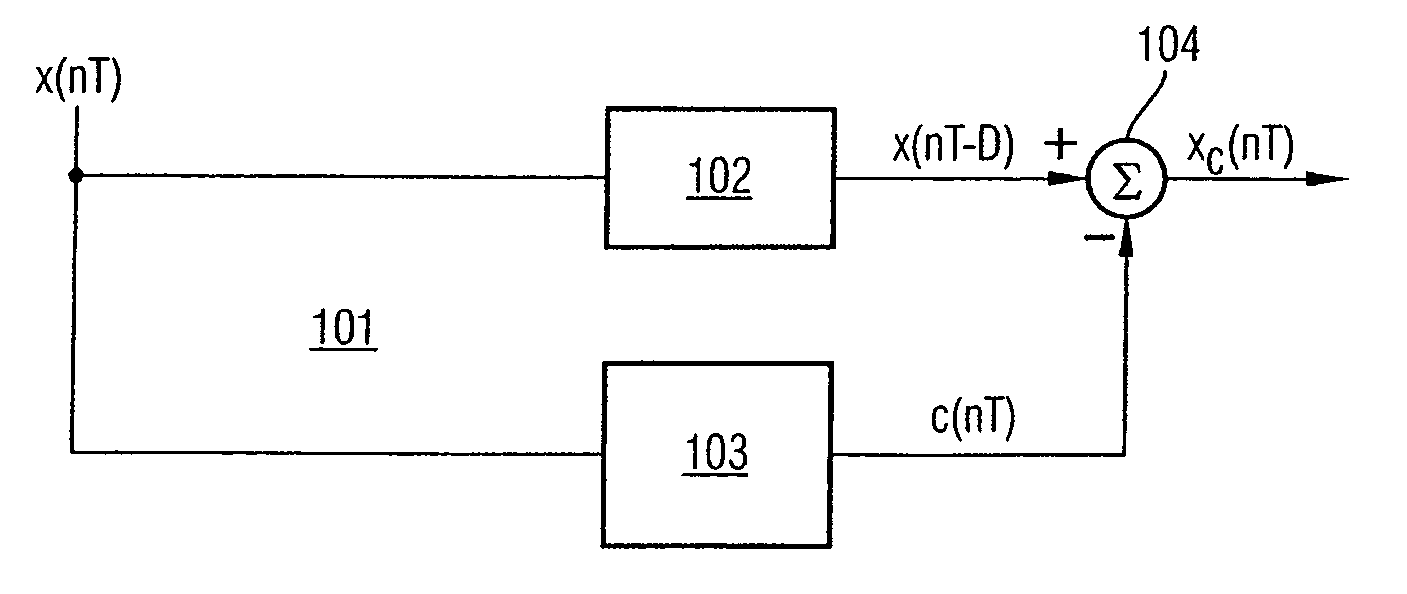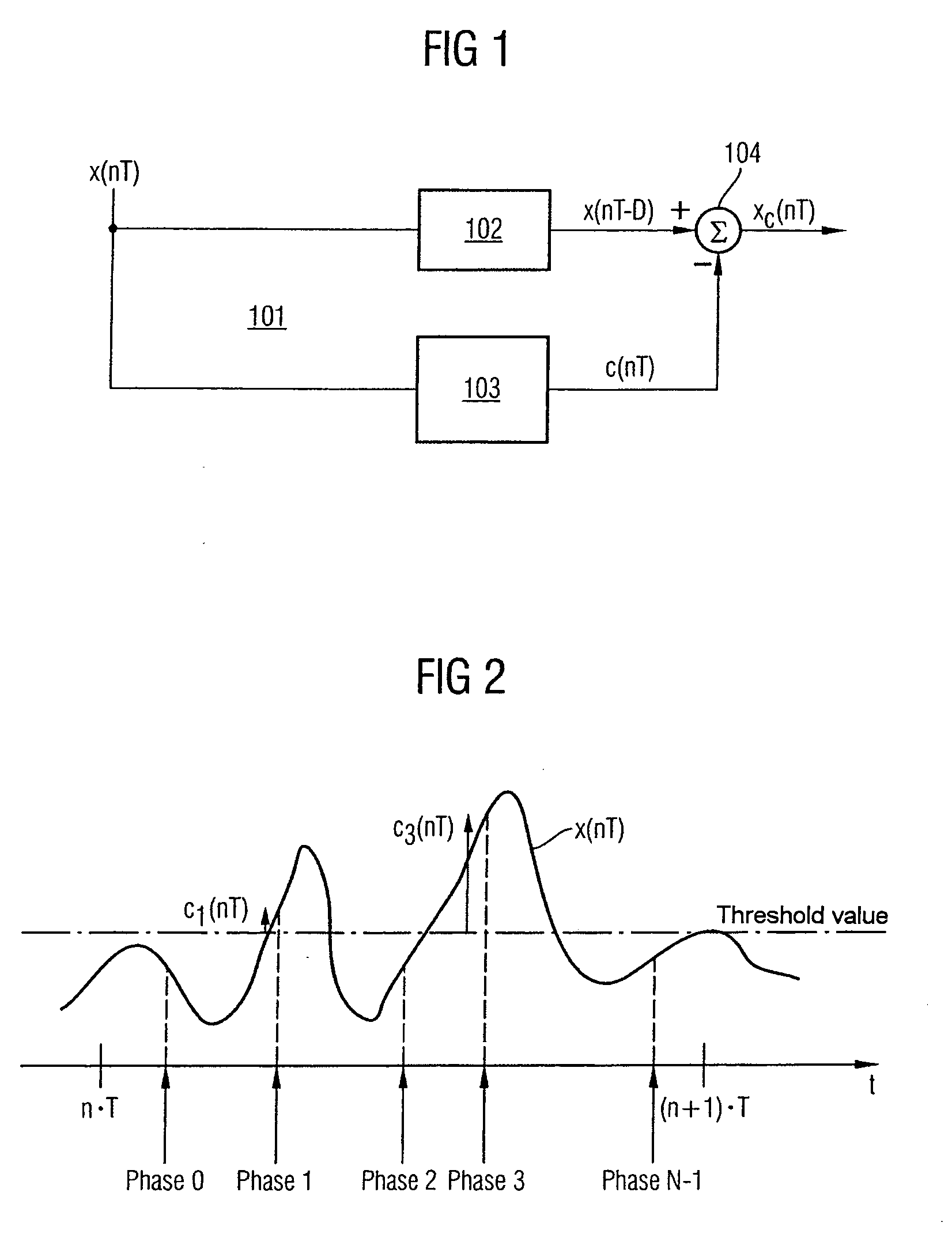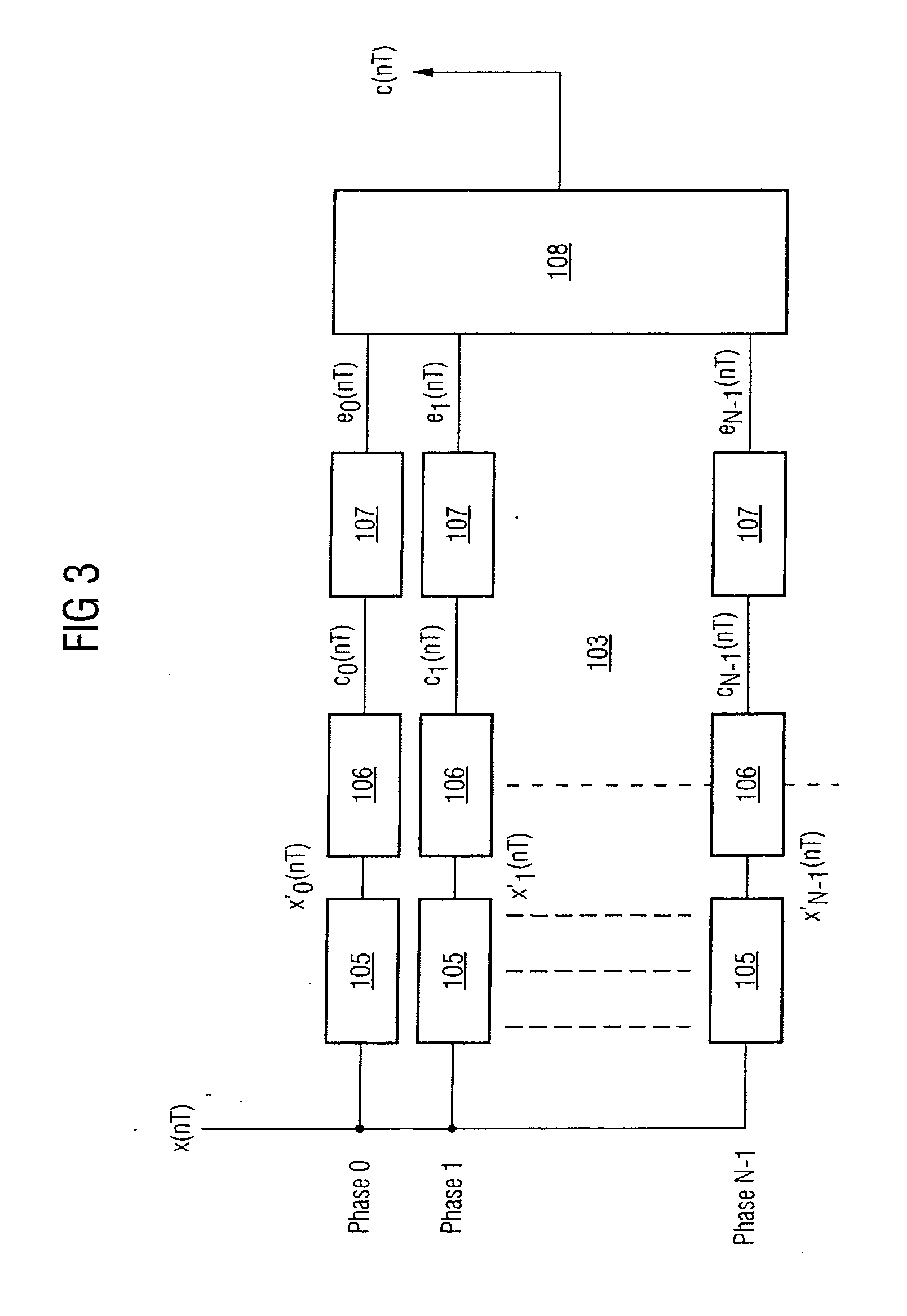Devices for reducing the dynamic range of signals in transmitters of communication systems
a technology of communication system and transmitter, applied in the field of transmitters in communication system, can solve the problems of reducing the dynamic range the most complex and expensive item of the power amplifier, and the disadvantageous wide dynamic range, so as to reduce the distortion power, reduce the dynamic range performance, and improve the correlation of correction values with the desired correction at the correction time
- Summary
- Abstract
- Description
- Claims
- Application Information
AI Technical Summary
Benefits of technology
Problems solved by technology
Method used
Image
Examples
Embodiment Construction
[0104]FIG. 1 shows an illustrative embodiment of a device for reducing the dynamic range of a signal according to the invention. The device is used for reducing the dynamic range of a signal at a first point in a signal processing direction in a transmitter of a communication system. The device is arranged at a second point along the signal processing direction within the transmitter which is located in front of the first point.
[0105] The communication system can be a mobile radio system and can be alternatively any wireless communication system such as, e.g., a wireless local area network (WLAN) or a wire-connected communication system. The transmitter is can be a transmitter of a base station of a UMTS mobile radio system. Signals in the transmitter are typically generated by a symbol source which maps bit streams to sequences of symbols, for example, by means of the QPSK modulation method and distributes these to physical channels by means of the WCDMA multiple access method. Th...
PUM
 Login to View More
Login to View More Abstract
Description
Claims
Application Information
 Login to View More
Login to View More - R&D
- Intellectual Property
- Life Sciences
- Materials
- Tech Scout
- Unparalleled Data Quality
- Higher Quality Content
- 60% Fewer Hallucinations
Browse by: Latest US Patents, China's latest patents, Technical Efficacy Thesaurus, Application Domain, Technology Topic, Popular Technical Reports.
© 2025 PatSnap. All rights reserved.Legal|Privacy policy|Modern Slavery Act Transparency Statement|Sitemap|About US| Contact US: help@patsnap.com



